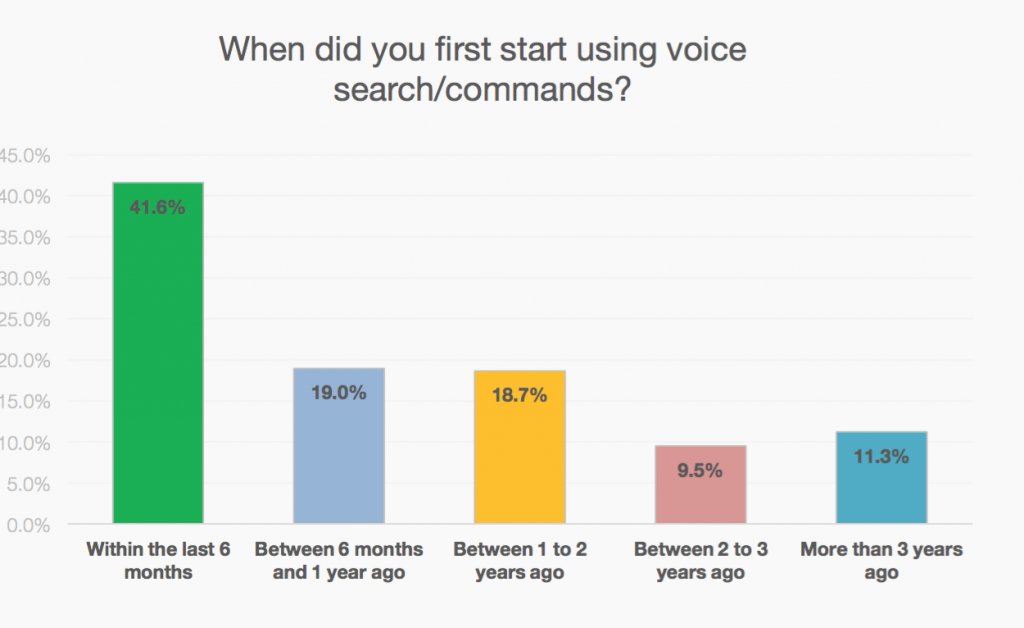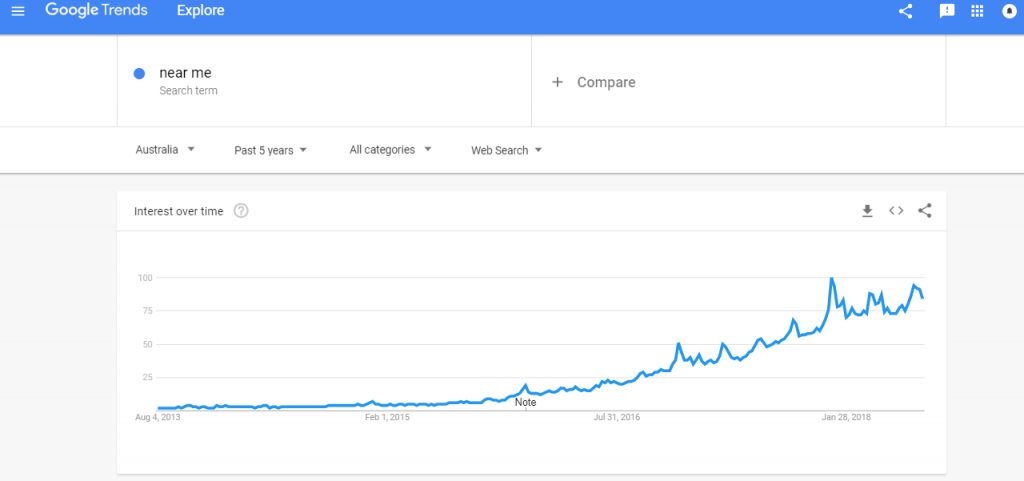3 Hidden SEO Opportunities Your Competitors Aren’t Using 


We can all agree, digital has changed and SEO has evolved with it.
You’re not grabbing backlinks from every possible site anymore and you aren’t loading your content with keywords.
That doesn’t mean that web page optimisation isn’t important anymore. You still have to optimise websites for search engines.
It’s the definition of SEO that has evolved over the years.
New technologies, such as social media and mobile, have changed the game.
SEO is still very much alive.
We’re going to explain why you need SEO and how you can adapt to the new SEO world.
What is SEO?
We all know the basics of SEO.
It’s a bunch of techniques, tools, and strategies that you use to earn high rankings in search engines.
That’s the simple version.
SEO is the key driver for two things:
- Rankings
- Visibility
They’re related concepts, but they’re not the same thing.Rankings are what most people jump to when they think of SEO.
It relates to where your website ranks in search engine results for the keywords you target.
Visibility is a much more complex subject.It’s how prominent you are in the search engine results pages (SERPS). This takes your rankings into account.
However, it also includes things like local search results, PPC ads, and if your products pop up on Google Shopping.
It also covers how visible you are across multiple platforms and devices. Visibility takes social, voice and mobile search into account too.
Combined, they drive traffic and conversions.
The Value of SEO
Does SEO provide a good ROI?
As a marketer, you’ve probably heard that question a dozen times.
You’re surrounded by people who may not understand how digital marketing works and want you to validate your efforts.
They’re relying on you to explain it to them.
Here are some useful stats that break it down:
- 61% of B2B buyers start their research with search engines.
- 85% of people use Google to research products when making shopping decisions.

Here’s the big one.Search can provide up to $20 of revenue for every $1 that you spend:

Figure 2 – https://neilpatel.com/blog/comparing-the-roi-of-content-marketing-and-paid-advertising/
That’s an enormous return on investment that highlights the power of great SEO.
Unfortunately, it’s not enough to optimise towards desktop users anymore. And for that, you’ll need to focus on some new areas:
- Mobile Search
- Voice Search
- Social Search
Ready to optimise your website for search engines? Consider these areas.
Mobile Search
Mobile is the big thing in the current search environment.In the United States, over 70% of internet usage occurs on mobile devices.
And over 57% of your search traffic comes from mobile devices.

Figure 3 – https://searchengineland.com/report-57-percent-traffic-now-smartphones-tablets-281150
If you’re not optimising for mobile, you’re missing out.
That’s because Google also takes the quality of the mobile experience you deliver into account.
In fact, mobile searches deliver different results to desktop searches in about 80% of cases.
You need to optimise towards mobile search.
Here are a couple of mobile website optimisation tips to get you started:
Tip #1 – Use AMP Mark-up
Since 2016, Google has given priority to websites that use AMP mark-up. AMP stands for Accelerated Mobile Pages and it allows you to provide a better experience for mobile users.

Figure 4 – https://ampbench.appspot.com/
This means you achieve higher rankings. In some cases, a site that uses AMP mark-up can rank above ads on mobile platforms.It’s also a great tool for increasing ROI.
Using the AMP carousel, you can maximise the visibility of your search results.
Here’s how it works.
With the carousel implemented, your search result doesn’t just include one piece of content. Instead, it includes a carousel of pieces that relate to the piece that the user discovered.
You can pack multiple pieces of content into a single search result.
Best of all, the carousel updates whenever you post new pieces that relate to the topic or keyword the user searches for.
Use AMP for web page optimisation on mobile.
Then, use the carousel to maximise your ROI from your search results.
Tip #2 – Get Responsive
Keeping track of a desktop and mobile website is a pain.
That’s where responsive design comes in.
Responsive HTML allows your webpages to adapt to the size of the user’s screen.
If they find your website on desktop, the page balloons up. If they find it on mobile, it shrinks down to fit the screen.Google favours responsive design. Plus, it gets results.
Take Blast Advanced Media as an example. They implemented responsive design for their website and achieved a 188% revenue increase for Black Friday.
Responsive design allows you to customise the website experience to the user. This means you optimise websites for search engines for both desktop and mobile devices.
Tip #3 – Get Rid of Adobe Flash Content
This is a simple one.Google doesn’t allow the use of Adobe Flash as part of its AMP project. If your website uses it, you can’t use AMP Mark-up.And that means your site won’t rank as well as it should in mobile search results.
Plus, you won’t be able to take advantage of the carousel mentioned above.
Adobe Flash also slows down the user’s device and has several vulnerabilities.
Simply put, search engines don’t like Flash. And mobile search engines hate it. Stop using it.
Voice Search
Most modern mobile devices incorporate voice search.Apple’s Siri is a great example.
And Google already receives over 20% of its queries from voice search.
Many modern laptops have voice search built in. And we now have devices like the Amazon Echo that process results based on voice commands.
It’s not a fad. Voice search is here to stay and your website has to account for it.

Figure 5 – https://www.wordstream.com/blog/ws/2017/03/14/google-voice-search
It also transforms how you do web page optimisation.
Voice searches differ from desktop search in a few major categories:
- It uses longer search terms that contain more conversational language.
- Users expect an immediate result, rather than having to search through ranked results.
- Voice search favours local results.
Now you need to know some website optimisation tips that take these issues into account.The following actions help:
Tip #1 – Optimise Your Business Listing
Once you’ve claimed your business listing, you need to optimise it.
Start by filling out all of the information that Google wants.
You want accurate opening hours and descriptions.
When people use voice search to find a local business, you want to provide them with accurate information.
Make sure your phone number includes your area code. Google uses this information to provide accurate results for the increasing number of “near me” queries.
From there, take advantage of the tools in your Google My Business (GMB) dashboard.
Add posts so that useful information comes up whenever someone sees your business in search rankings. Answer the questions that people post and include attractive images that catch the eye.
Finally, check back often. Others can edit your business information, often without you receiving any notification.
Check your listing weekly to make sure it’s still accurate.

Tip #2 – Understand Your Audience
We’ve established that voice searchers use longer queries.
And they want direct answers, rather than a list of websites that might answer the question.
This technique is a simple one: create content based on the questions that people ask.
A company called River Pools and Spas demonstrates a great example of this.
They checked their data and found that a lot of voice search users asked the question “how much does a fibreglass pool cost?”
One blog post later and the company pulled in over $2 million in sales.
Use the same tactic.
Figure out the questions that people ask and provide direct answers to them.
A tool like Answer The Public helps with this. Enter a search term and you’ll get a bunch of questions based on that term:

These are all questions that voice searchers may ask.
There are plenty of other ways to find out what people want to know. Check industry-relevant forums to see what people ask others. Examine your competitors to see what they’re writing about. Use social media groups to get a sense of the hot-button issues in your industry.
You can even pick up on what people are asking your sales teams.
You’ll build a list of questions that people are already asking. That allows you to gear content around them so that you can rank for the voice queries that people make.
Social Search
There’s a change afoot in social media.Until now, you used it to create brand awareness and interact with customers.You may have even used Facebook ads.
They’re effective too, as Barbell Apparel found out when they used them for their Kickstarter campaign. They ended up attracting $735,000 on a $15,000 goal using Facebook ads.

Figure 6 – https://wisemerchant.com/surpass-kickstarter-campaign-goal/
Most people don’t figure social media and SEO to fall into the same category. SEO is all about web page optimisation whereas social media is all about engagement.
That’s not the case anymore.
Social media platforms, such as Facebook and Instagram, have shifted into the search domain. All of them have created tools to make it easier for users to search for content.
Instagram is a great example.
The platform offers regular suggestions packed full of influencers you could follow.
However, these platforms also work differently to traditional search. Website optimisation tips aren’t going to help you with social search.
These platforms provide results based on different metrics to search engines.
They’ll look at metrics such as the content and posts that the user likes. Or, they’ll check the accounts that they follow. They may even pick up on locational data to make content recommendations.
It’s an entirely new game.
It’s search without the user having to actively search.Social media platforms have also started to change the ways that they display content to users.
Take Facebook as an example.
Traditionally, somebody would click through to your website when you post an article on Facebook. Now, Facebook sometimes uses its Instant Articles tool to display the article directly on the platform.
This raises an interesting conundrum. It decentralises your content, so you have to worry about more than web page optimisation.You also have to optimise content for display on these social media channels.
It’s SEO that doesn’t necessarily take your website into account.
Unfortunately, there’s not a ton that you can do to optimise social media search results. They’re based on user actions, rather than active searches.
The best that you can do is optimise your social content towards specific groups, interests, and locations. Think about how social media platforms look at somebody’s activity.
All of those likes, shares and follows link into specific brands and interests.
Your content and social media search strategy has to take that into account.
Final Word
What is SEO?
In the modern age, it’s so much more than web page optimisation.
Optimising for search engines is, and always will be, important.
Emerging technologies and changing consumer habits mean you have to adapt and evolve.
This article provides some advice on how to do that for some emerging SEO fields. It helps you to account for the rising popularity of mobile, voice, and social search.
Focusing on these platforms ensures you maximise your search strategy. You reach more people through a larger variety of channels.
Finally, you reach people on the channels that have become more popular than desktop search.
However, there’s so much more to learn.
Got Questions?
Pushing traffic towards a website is an extremely important part of any SEO strategy. But it’s the quality of that traffic that’s the true deciding factor.
Even poor SEO can boost the traffic numbers. But it won’t provide a business with the quality that it needs to generate a return.
With all of this evidence, along with the many statistics shared in this article, you can now see just how vital SEO is for the modern business. You can also see how it’s evolved into something completely different to what it was before.
But you might have questions? Or you might be wondering if SEO is the right choice for your business? If so, just go here to have a friendly no-obligation chat with one of our gurus.









